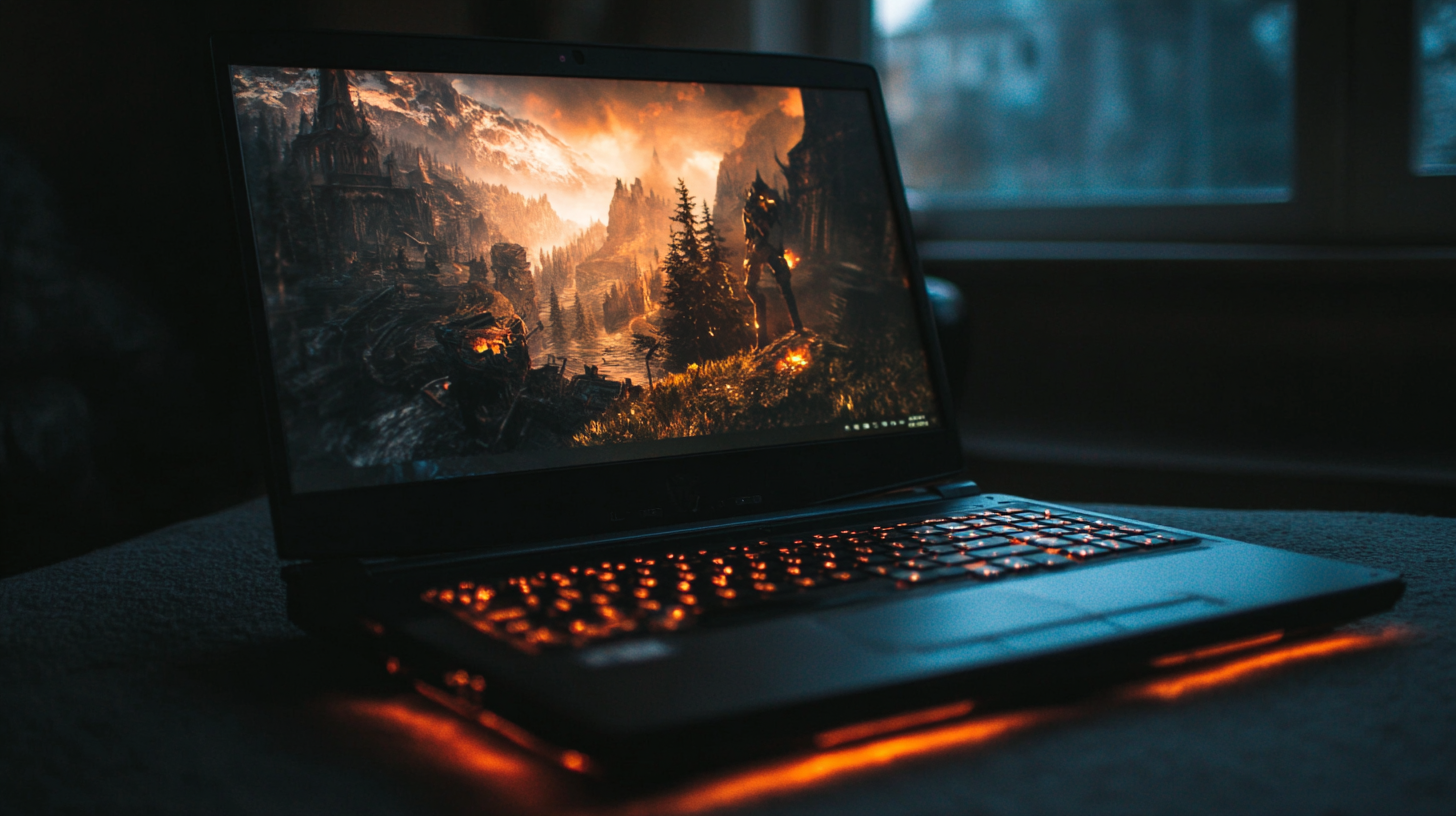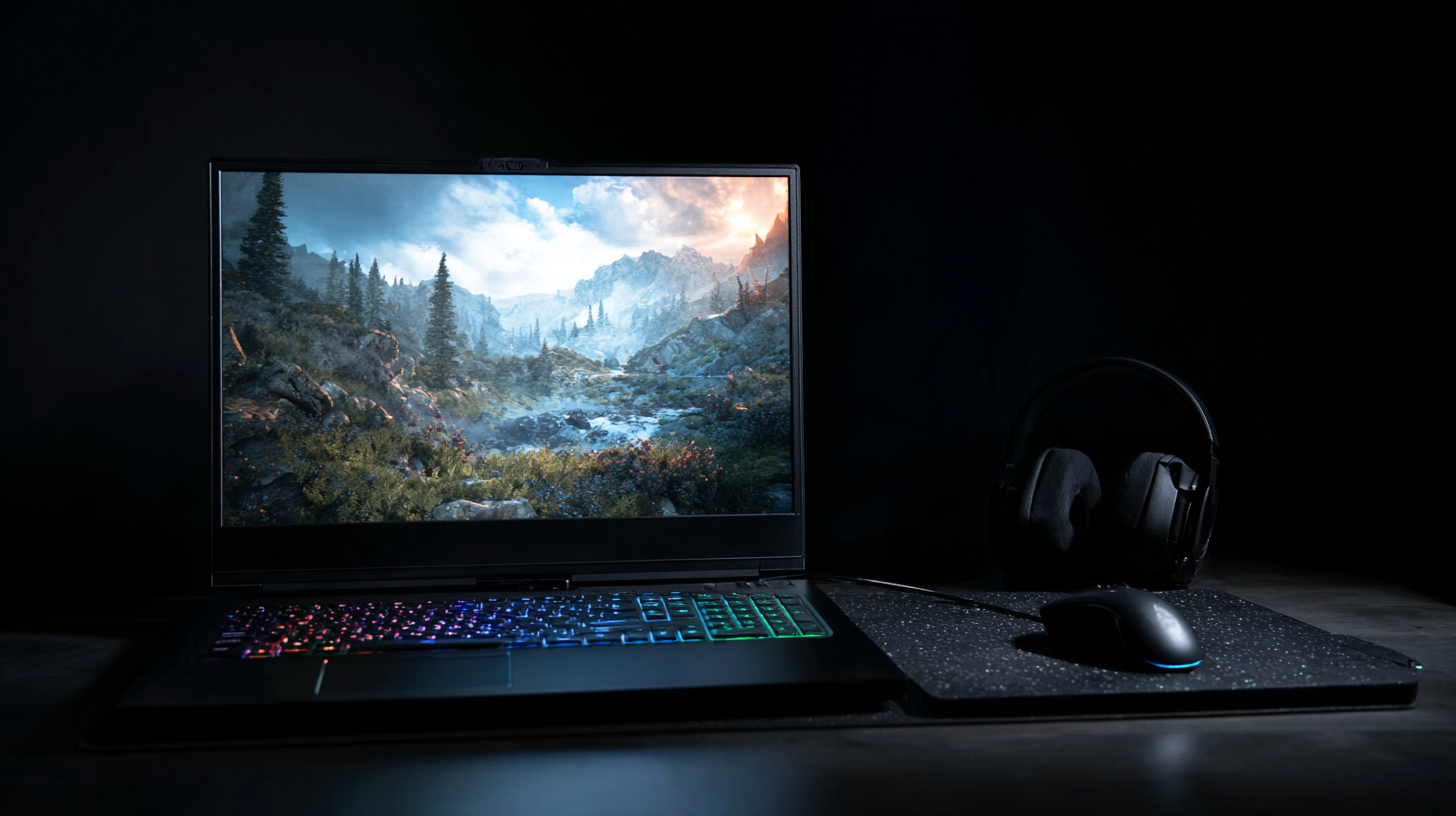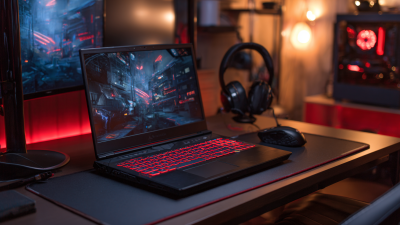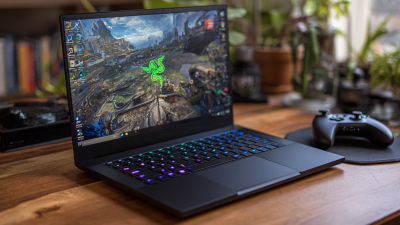One-stop service of R&D, production and sales for 10 years
Leave Your Message
The demand for gaming computer laptops has surged in recent years, driven by a growing gaming community and advancements in technology. According to a report by Newzoo, the global gaming market is set to reach $218.7 billion by 2024, with PC gaming remaining a significant segment of this growth.

Gaming computer laptops are specifically designed to meet the high performance demands of modern games, featuring powerful graphics cards, high-refresh-rate displays, and efficient cooling systems. A study from the International Data Corporation (IDC) reveals that the gaming laptop market is projected to grow at a compound annual growth rate (CAGR) of 12.4% from 2021 to 2026, underscoring the increasing interest in portable gaming. These laptops not only enhance the gaming experience through superior graphics and faster processing capabilities but also cater to the increasing need for flexibility and mobility among gamers.
When considering what defines a gaming laptop, several key specifications stand out that greatly enhance the gaming experience. A powerful processor, often found in high-quality gaming laptops, is essential for managing complex game environments and multitasking effectively. The incorporation of high-performance graphics cards allows the laptop to render intricate visuals smoothly, ensuring gamers enjoy rich detail and fluid motion in their gameplay.
Additionally, sufficient RAM is crucial for preventing lag during intense gaming sessions. Most gaming laptops feature 16GB or more, supporting fast data access and enabling seamless operation of the latest titles. Furthermore, storage solutions like SSDs provide rapid loading times, significantly improving the overall user experience. The combination of these specifications ensures that gaming laptops not only deliver superior performance but also maintain a level of portability that allows gamers to enjoy their favorite games anywhere.
| Specification | Description |
|---|---|
| Processor (CPU) | High performance processors (e.g., Intel Core i7/i9 or AMD Ryzen 7/9) |
| Graphics Card (GPU) | Dedicated graphics card (e.g., NVIDIA GeForce RTX or AMD Radeon RX series) |
| RAM | Minimum 16GB, preferably 32GB for smoother multitasking |
| Storage | SSD is preferred for faster load times; at least 512GB |
| Display | High resolution (1080p or higher) with a high refresh rate (144Hz or more) |
| Cooling System | Advanced cooling solutions to prevent overheating during intense gaming sessions |
| Battery Life | Decent battery (around 4-8 hours) but typically reduced during gaming |
| Connectivity | Multiple USB ports, HDMI, and Wi-Fi 6 for better connectivity |
 The performance of a gaming laptop is intricately tied to its GPU, as this component directly influences frame rates, providing a smooth and immersive gaming experience. According to a study by Jon Peddie Research, the gaming industry is expected to generate over $159 billion in 2020, a significant portion driven by advancements in GPU technology. High-performance GPUs can enhance frame rates dramatically; for instance, a system equipped with an NVIDIA GeForce RTX 3080 can deliver an average of 100 frames per second (fps) in demanding titles at 1440p resolution, compared to just 30 fps with lower-end models.
The performance of a gaming laptop is intricately tied to its GPU, as this component directly influences frame rates, providing a smooth and immersive gaming experience. According to a study by Jon Peddie Research, the gaming industry is expected to generate over $159 billion in 2020, a significant portion driven by advancements in GPU technology. High-performance GPUs can enhance frame rates dramatically; for instance, a system equipped with an NVIDIA GeForce RTX 3080 can deliver an average of 100 frames per second (fps) in demanding titles at 1440p resolution, compared to just 30 fps with lower-end models.
Tips: To maximize your laptop's gaming performance, consider investing in a cooling pad to prevent thermal throttling, ensuring the GPU operates at peak efficiency. Additionally, upgrading RAM can improve multitasking capabilities and overall responsiveness during gameplay.
The impact of frame rates extends beyond mere visuals; it influences gameplay responsiveness and competitive advantage. Fast refresh rates (such as 144Hz or higher) can make a notable difference in performance, allowing gamers to react swiftly in fast-paced environments. Research from NVIDIA indicates that higher frame rates contribute to increased user satisfaction and retention, with players reporting a greater sense of immersion and control when using high-performance GPUs. Thus, prioritizing GPU selection is essential for any serious gamer looking to elevate their gaming experience.
When selecting a gaming computer laptop in 2023, understanding RAM requirements is crucial for achieving optimal gaming performance. Modern games demand not only powerful CPUs and GPUs but also sufficient RAM to handle multitasking and high-resolution textures. A minimum of 16 GB of RAM is recommended for most contemporary titles, ensuring smooth gameplay even when running background applications like streaming software or voice chat.
Moreover, some of the latest games can benefit from up to 32 GB of RAM, especially those that feature expansive open worlds or complex mechanics. This additional memory allows for faster load times and reduced stuttering during intense gaming sessions. As game developers continue to push the boundaries of graphics and gameplay, investing in a gaming laptop with ample RAM is essential for an enhanced gaming experience, enabling players to enjoy immersive worlds without the frustration of lag or crashes.
When it comes to gaming laptops, the storage type plays a crucial role in the overall performance and gaming experience. Solid State Drives (SSDs) have surged in popularity due to their ability to significantly reduce loading times compared to traditional Hard Disk Drives (HDDs). Research indicates that SSDs can lead to load time reductions of up to 70% in many gaming scenarios. For instance, a game that normally takes 60 seconds to load from an HDD might only take around 18 seconds on an SSD, providing a smoother and more seamless experience for gamers.
Moreover, the speed advantage of SSDs extends beyond mere loading times. According to data from industry analysts, games installed on SSDs not only load faster but also exhibit improved frame rates in open-world environments. This enhancement is attributed to the faster data access speeds, which allow the CPU and GPU to retrieve assets more efficiently. Gamers seeking high performance and little to no lag will find that investing in a laptop with an SSD is essential, particularly as games continue to increase in size and complexity. As a result, SSDs have become an integral component of modern gaming laptops, transforming how games are experienced.

The gaming experience is heavily influenced by the quality of the display and refresh rate of monitors. With advancements in technology, gamers now have access to options that provide astonishing clarity and smoothness. Recent reports indicate that monitors boasting resolutions up to 4K paired with refresh rates of 240Hz or even 480Hz are becoming the standard for immersive gameplay. These high refresh rates reduce motion blur and enhance fluidity, crucial for fast-paced games where every millisecond counts.
Additionally, curved and ultrawide displays have gained popularity as they envelop the viewer, creating a more engaging environment. The 21:9 aspect ratio found in ultrawide monitors expands the field of view, providing a significant advantage in competitive gaming by allowing players to see more of the environment. The seamless, expansive visuals delivered by such monitors enhance immersion and can transport players deeper into their gaming worlds, as confirmed in industry studies showing that immersive visuals can increase a player's sense of presence in the game.
High refresh rates combined with advanced display technologies transform gaming from a mere activity into an experience that captivates and engages gamers on a new level.






